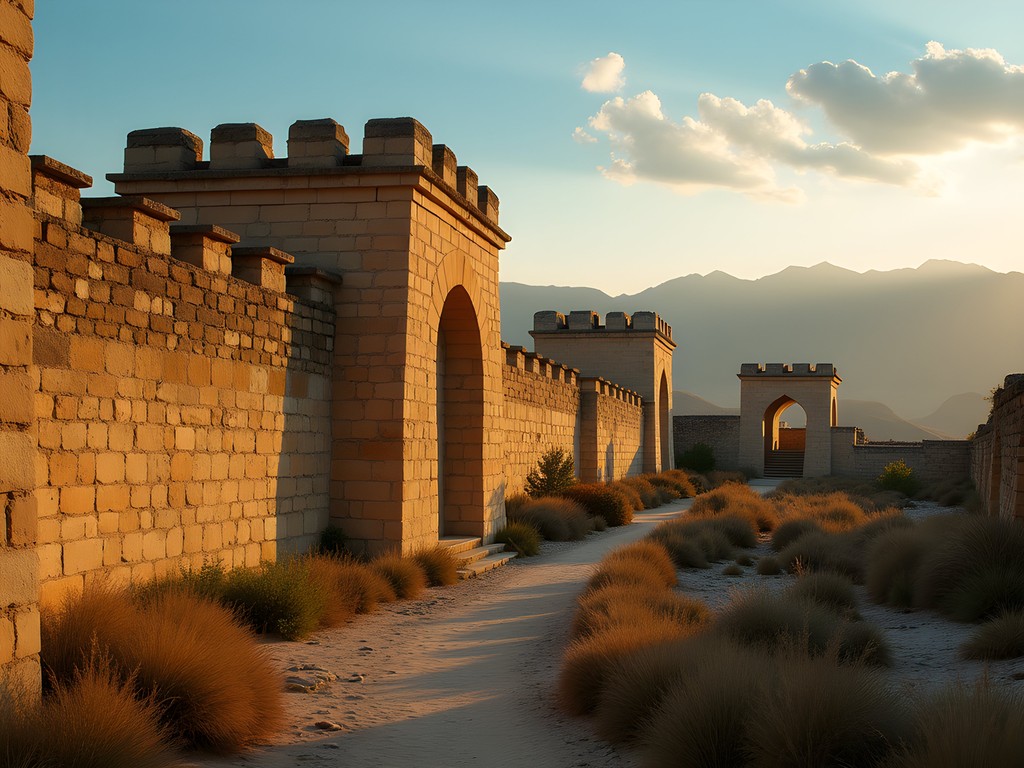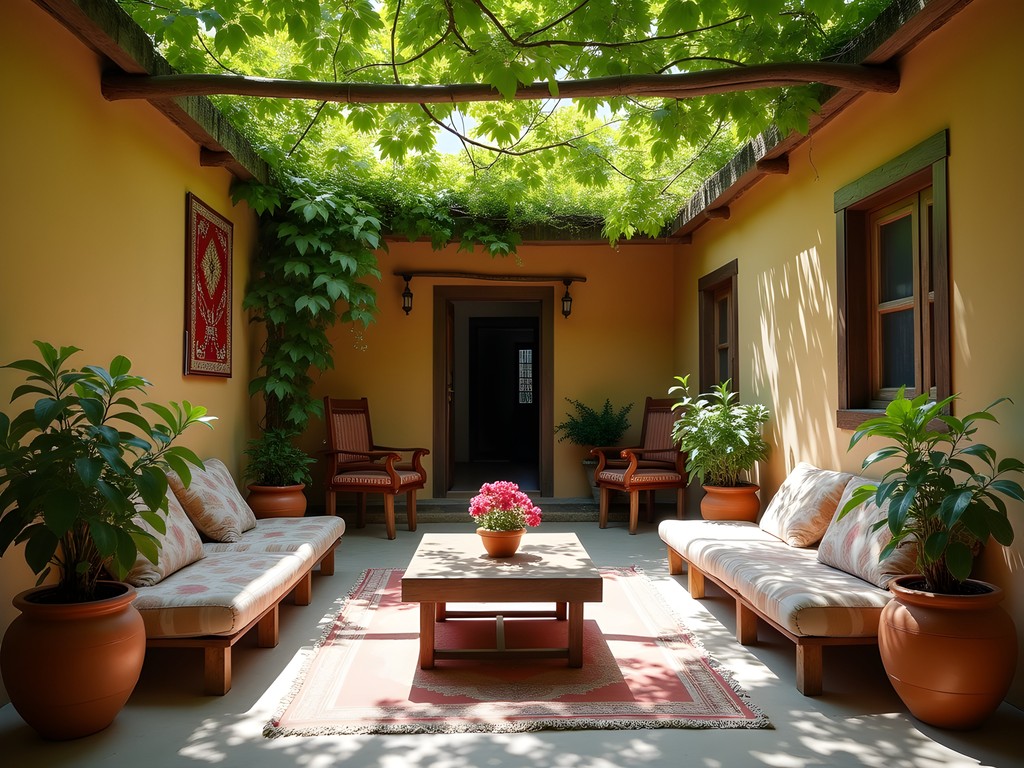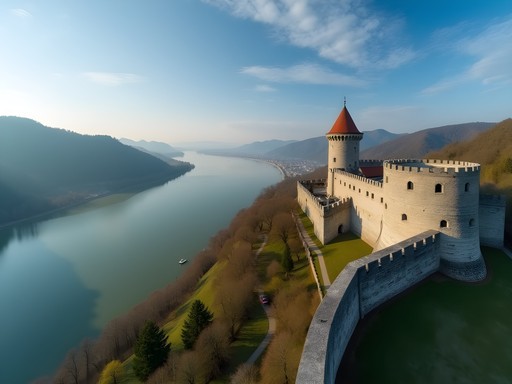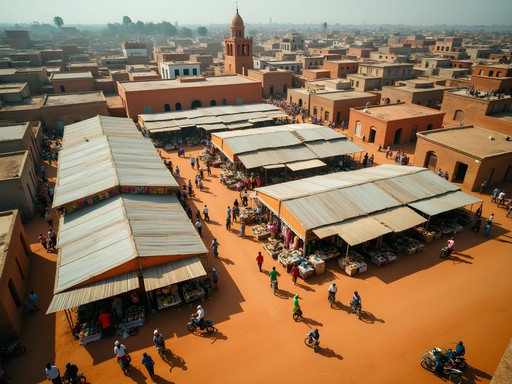Disclosure: This article contains affiliate links. We may earn a commission from purchases at no extra cost to you, which helps our travel content.
There's something profoundly humbling about standing in a place that has witnessed over 2,500 years of human history. As the cool spring breeze carried the scent of fresh bread and spices across Khujand's ancient streets, I found myself transported to a world where time seems to move differently. After years of seeking healing waters across the globe, my journey led me to this often-overlooked Tajik city, once a vital hub on the Northern Silk Road. While Khujand lacks the thermal springs I typically gravitate toward, it offers something equally restorative—a rare glimpse into a cultural crossroads where Persian, Sogdian, and Soviet influences create a tapestry as rich as the textiles sold in its famed Panjshanbe Bazaar. This wasn't the wellness retreat I usually document, but as I've learned through my travels, sometimes cultural immersion provides its own form of healing. Join me as I share my week exploring this Central Asian gem, where ancient traditions persist against a backdrop of snow-capped mountains and the mighty Syr Darya river.
Finding My Way in Khujand's Historical Heart
My journey to Tajikistan began with that familiar mix of anticipation and trepidation that accompanies venturing into less-traveled territories. After a series of flights and a bumpy taxi ride from Dushanbe, I arrived in Khujand as the afternoon light bathed the city in a golden hue. I'd booked a modest guesthouse run by a local family—exactly the kind of authentic accommodation I prefer over international chains when immersing myself in a new culture.
Khujand's historical center reveals itself slowly, like pages in an ancient manuscript. My first morning, I set out with my well-worn travel journal to explore the remnants of the city Alexander the Great once named Alexandria Eschate—the 'Furthest Alexandria.' The ancient citadel, partially restored but still bearing scars of its tumultuous past, stands as a testament to the city's strategic importance.
What struck me most was how history here isn't cordoned off behind museum glass—it's a living, breathing entity. Elderly men played nard (backgammon) in the shadows of centuries-old walls, their weathered hands moving pieces across boards with practiced precision. Children raced around monuments that have witnessed empires rise and fall.
As a solo female traveler in Central Asia, I'd prepared myself for challenges, but Khujand surprised me with its welcoming atmosphere. While modest dress is essential (I packed several lightweight scarves and loose-fitting clothing), I found locals eager to share their stories, often through a combination of broken English, Russian phrases, and expressive hand gestures. This wasn't the Tajikistan often portrayed in Western media—this was a place of genuine warmth and hospitality.

💡 Pro Tips
- Learn basic Russian phrases as they're more widely understood than English
- Dress modestly with shoulders and knees covered (women should carry a scarf)
- Download maps offline as internet connectivity can be unreliable
Panjshanbe Bazaar: A Sensory Symphony
If there's one place that captures Khujand's essence, it's the sprawling Panjshanbe Bazaar. The name itself—meaning 'Thursday market'—hints at its historical significance as a weekly trading hub, though today it buzzes with activity every day. Housed in a magnificent Soviet-era building with distinctly Central Asian architectural elements, this market became my daily ritual during my stay.
The bazaar assaults the senses in the most delightful way. Pyramids of vibrant spices create a kaleidoscope of colors—deep crimson paprika, golden turmeric, and verdant herbs. The air is thick with the scent of freshly baked non (traditional bread), while vendors call out their wares in a melodic symphony of Tajik, Russian, and Uzbek.
I found myself drawn to the textile section, where artisans sell handcrafted suzani—embroidered tapestries with intricate patterns passed down through generations. One elderly woman, noticing my interest, invited me to sit beside her as she worked, her fingers moving with hypnotic precision across fabric stretched on a wooden frame. Though we shared no common language, she taught me a few simple stitches, communicating through smiles and patient demonstrations.
Food at the bazaar deserves special mention. After hesitantly sampling my first Tajik dishes, I was converted. Plov (a rice dish with carrots, onions, and meat) became my staple, along with shashlik (grilled meat skewers) and sambusa (savory pastries). I documented each culinary discovery with my travel camera, capturing both the food and the hands that prepared it—often weathered by decades of work but moving with practiced precision.
The bazaar isn't just a market; it's a social institution where locals gather to exchange news, negotiate marriages, and maintain community bonds. As a solo traveler, I found it the perfect place to observe daily life unfiltered, revealing more about Tajik culture than any museum could.


💡 Pro Tips
- Visit early morning (around 7-8am) for the freshest produce and fewer crowds
- Bring small denominations of Tajik somoni for easier transactions
- Ask permission before photographing vendors or their goods
Tracing the Silk Road Legacy
Khujand's position on the ancient Silk Road shaped not just its history but its very soul. While major Silk Road cities like Samarkand and Bukhara in neighboring Uzbekistan draw larger crowds, Khujand offers a more intimate glimpse into this legendary trade network without the tourist infrastructure that can sometimes dilute authenticity.
I spent a day with Firuz, a local historian I connected with through my guesthouse owner. Armed with my travel daypack filled with water, snacks, and my journal, we traced the footsteps of merchants who once carried silk, spices, and ideas across continents.
The Sheikh Muslihiddin Complex became our first stop. This 12th-century mausoleum houses the remains of a revered religious leader, but what fascinated me most were the stories Firuz shared about how religious ideas traveled alongside goods on the Silk Road. Buddhism, Zoroastrianism, Christianity, and finally Islam all made their way through this corridor, each leaving imprints on local culture.
We continued to the Historical Museum of Sughd Region, housed in a striking modern building. Inside, artifacts from different eras tell the story of Khujand's evolution—Greek coins from Alexander's time, delicate Chinese porcelain, and Soviet-era propaganda posters, all evidence of the city's position at the crossroads of civilizations.
What I hadn't expected was how the Silk Road's legacy continues to shape daily life. Families still practice crafts introduced centuries ago; culinary traditions reflect influences from both East and West; even linguistic patterns reveal the blending of Persian, Turkic, and Slavic elements. As someone who seeks the authentic pulse of a destination, I found myself constantly noting how past and present intertwine here without the self-consciousness that often comes with more developed tourist destinations.

💡 Pro Tips
- Hire a local guide for deeper historical context—most have personal connections to the sites
- Visit the Historical Museum early to avoid school groups
- Look for Silk Road motifs in modern artwork and architecture throughout the city
Cultural Immersion Through Homestays
After years of traveling solo across thermal regions of the world, I've discovered that authentic connections often happen not at tourist sites but in everyday moments with locals. In Khujand, I split my accommodations between a small guesthouse and a family homestay—a decision that transformed my understanding of Tajik culture.
My host family lived in a traditional home with rooms arranged around a central courtyard where grapevines provided welcome shade from the spring sun. Three generations shared the space, from 80-year-old Grandmother Zukhra to 7-year-old Madina, who appointed herself my personal guide despite our language barrier.
The family welcomed me into their daily routines with genuine warmth. Mornings began with a breakfast of fresh bread, homemade jam, and tea served from a beautiful handpainted ceramic pot. I quickly learned that refusing food was considered impolite, so I came prepared with my digestive enzymes to help manage the generous portions that kept appearing before me.
What struck me most was the rhythm of family life—so different from my hurried existence back in Jacksonville. Afternoons often found the women gathering to prepare food together, their hands working in synchronized harmony as they rolled out dough for mantis (dumplings) or chopped vegetables for qurutob (a dish of flatbread topped with a yogurt-based sauce). I was invited to join, my clumsy attempts at folding dumplings met with good-natured laughter and patient correction.
Evenings brought storytelling, with Grandfather Rustam recounting tales from Tajik folklore, his voice rising and falling dramatically as Madina translated key points into her limited English. Under stars that seemed impossibly bright, I found myself contemplating how these oral traditions had survived centuries of political upheaval and cultural change.
The homestay experience offered insights no hotel could provide—from observing the subtle gender dynamics within the household to understanding how Soviet influence still shapes daily life. When the family learned of my interest in wellness traditions, Grandmother Zukhra showed me her collection of dried herbs and explained their medicinal properties, a knowledge system passed down through generations of women.

💡 Pro Tips
- Bring small gifts from your home country as a thank-you to host families
- Learn basic Tajik greetings—even simple efforts are deeply appreciated
- Offer to help with household tasks as a way to connect beyond verbal communication
Beyond the City: Day Trips to Natural Wonders
While Khujand itself captivated me with its historical riches, some of my most profound experiences came from venturing beyond city limits. The surrounding landscape—where rugged mountains meet fertile valleys carved by ancient rivers—provides context for understanding why civilizations have clung to this region for millennia.
With my newfound friend Aziza, a university student eager to practice her English, I arranged transportation to Kayrakum Reservoir (also called the Tajik Sea). Just 20 kilometers from Khujand's bustle, this massive water body created during the Soviet era offers a striking contrast to the arid landscapes typical of Central Asia. Spring wildflowers dotted the shoreline in explosions of color, while local families picnicked along the beaches.
Aziza explained how the reservoir, while providing essential irrigation and hydroelectric power, also submerged ancient settlements—a reminder of how Soviet planning often prioritized industrial progress over cultural preservation. Yet the resulting ecosystem has become integral to local life, providing fish and recreation opportunities.
The highlight of my excursions was undoubtedly a day trip to the Shahriston Pass in the Turkestan Range. After a winding drive through increasingly dramatic terrain, we reached an elevation of over 3,300 meters. The air, noticeably thinner, carried a crispness that invigorated my senses after days in the city.
I'm typically drawn to hot springs in my travels, seeking their healing properties for both body and spirit. While Tajikistan has several thermal areas, none are near Khujand. Yet standing on that mountain pass, watching eagles soar on thermal currents above valleys that have witnessed caravans traversing for thousands of years, I found a different kind of restoration—one that comes from connecting with landscapes of profound historical significance.
For this journey, my hiking boots proved essential, providing stability on rocky terrain while we explored ancient petroglyphs etched into boulders scattered across the landscape. These simple drawings of hunters, animals, and celestial symbols connected me to the earliest human inhabitants of this region in a way no museum artifact could.

💡 Pro Tips
- Arrange transportation through your accommodation for the best rates on day trips
- Pack layers for mountain excursions as temperature changes can be dramatic
- Bring twice as much water as you think you'll need, especially at higher elevations
Final Thoughts
As my week in Khujand drew to a close, I found myself sitting by the Syr Darya river at sunset, watching the water catch fire with golden light. While I came seeking cultural heritage, I discovered something more valuable—a reminder that history isn't static but constantly evolving through the lives of ordinary people. Khujand may not appear on many travelers' bucket lists, but for those willing to venture beyond the familiar, it offers rare insights into a region where East meets West, past meets present, and hospitality remains the highest virtue. The ancient Silk Road wasn't just about goods exchanged but ideas shared and cultures transformed—a process that continues today for travelers open to its lessons. As I prepare to return to my wellness-focused travels, I carry with me the understanding that cultural immersion itself can be profoundly healing. Perhaps that's the greatest souvenir from this journey through Tajikistan's hidden gem—the knowledge that sometimes, the road less traveled leads exactly where your spirit needs to go.
✨ Key Takeaways
- Khujand offers authentic cultural immersion without the tourist infrastructure of better-known Silk Road cities
- Homestays provide deeper connection to Tajik culture than hotels or guesthouses alone
- Spring visits offer ideal weather and stunning mountain landscapes dotted with wildflowers
- Learning basic Russian phrases opens more doors than English in this region
- The Silk Road legacy lives on in everyday aspects of Khujand life, from crafts to cuisine
📋 Practical Information
Best Time to Visit
April-May or September-October
Budget Estimate
$30-50 USD per day including accommodation, food and local transportation
Recommended Duration
5-7 days
Difficulty Level
Challenging
















Comments
backpackdreamer
Just got back from Tajikistan last month and your post brought back so many memories! The Panjshanbe Bazaar was definitely the highlight for me too. I still dream about those fresh apricots and the mountain honey! One tip for anyone heading there - I found having a phrasebook absolutely essential since English isn't widely spoken. Also, don't miss the small museum near the fortress - it's poorly signed but has some incredible Silk Road artifacts. Taylor, your description of the sunset by the river captured exactly how I felt there - something magical about that place that's hard to put into words.
wilddiver
Planning to visit next spring! How many days would you recommend for Khujand? And is it easy to get to other Tajik cities from there?
dreamadventurer
@wilddiver Not the author but I spent 4 days there last year and it felt perfect - enough to see everything without rushing. There are shared taxis to Dushanbe but it's a long journey (7+ hours). Worth it though!
photoseeker
Beautiful post! I'm curious about the homestay experience - how did you arrange it? Was it through a specific platform or just when you arrived?
Taylor Nichols
@photoseeker I actually arranged it through a local tour company called Pamir Guides. They connected me with a wonderful family in the older part of the city. You could also try contacting the Khujand Tourist Information Center - they keep a list of vetted homestay families!
photoseeker
Thanks so much! Will definitely look into Pamir Guides.
luckypro
Those bazaar photos are incredible! The colors just jump off the screen!
Hunter Thompson
Brilliant piece on Khujand, Taylor! I backpacked through Central Asia last year and Khujand was such an underrated gem. The Panjshanbe Bazaar was absolute chaos in the best possible way - I spent hours getting lost among the spice merchants and fabric sellers. Did you try the Qurutob while you were there? That fermented milk dish nearly killed me but the locals found my reaction hilarious! The homestay experience was definitely the highlight for me too - nothing beats drinking tea with a family who's lived in the same house for generations. Your sunset moment by the Syr Darya river resonated with me - those quiet reflective moments are what travel's all about.
dreamadventurer
Hunter - how did you handle the language barrier in Khujand? I'm thinking of going but worried about communication!
Hunter Thompson
@dreamadventurer Basic Russian phrases helped a lot, plus Google Translate offline for Tajik. Honestly though, people were super patient with hand gestures and pointing. You'll manage fine!
Hayden Butler
Taylor, your piece transported me back to my own Silk Road journey last year. There's something about Khujand that feels suspended between eras - I remember sipping tea in a chaikhana while watching craftsmen work using techniques unchanged for centuries, all while teenagers nearby scrolled on smartphones. Your description of the Panjshanbe Bazaar captured that sensory experience perfectly. My favorite memory was joining an impromptu evening gathering where an elderly man played traditional dutar music while his grandson translated the lyrics about ancient caravans and lost loves. Did you encounter any musical performances during your stay? They add such a rich dimension to understanding the culture.
Taylor Nichols
Hayden - yes! I was lucky enough to witness a small falak performance at my homestay. The instruments and vocal techniques were unlike anything I'd heard before. That contrast between ancient traditions and modernity is exactly what makes Tajikistan so fascinating.
coffeeclimber
I'm so intrigued by your homestay experience! How did you arrange it? Was it through a tour company or did you find it independently? I always want to do these but get nervous about the logistics.
Taylor Nichols
I arranged it through a local guide I met at my hostel in Dushanbe. Many hostels can connect you with homestay networks. The family spoke basic English which helped a lot!
blueking
Those sunset pics by the river 😍
smartpro
Great post! I'm planning a trip to Central Asia next year and thinking about including Tajikistan. How difficult was it to get around with English? And did you feel safe as a solo traveler? Any transportation tips between cities?
Taylor Nichols
English isn't widely spoken outside tourist areas, but I got by with basic Russian phrases and Google Translate. Safety wasn't an issue at all - people were incredibly hospitable. For transport, shared taxis between cities are affordable and relatively comfortable. I used the phrasebook constantly - absolute lifesaver!
Dylan Turner
Excellent piece on Khujand, Taylor. I visited in 2024 and found the historical layers fascinating - from Alexander the Great to Soviet influence. Your section on homestays resonated with me. The family I stayed with near Panjshanbe taught me to make qurutob, and that cooking lesson turned into a three-hour cultural exchange despite minimal shared language. One analytical observation: Tajikistan's tourism infrastructure is developing rapidly compared to my previous visit in 2019. The preservation efforts at the Khujand Fortress seem much more sophisticated now. Did you notice any tension between preservation and development during your stay?
Taylor Nichols
Great observation about the preservation/development balance, Dylan. I definitely noticed that tension, especially around the fortress area. Local officials I spoke with mentioned the challenge of modernizing while protecting heritage. It's a delicate balance they're still figuring out.
coffeeclimber
That qurutob cooking lesson sounds amazing! Did either of you try making it after returning home? I always try to bring back recipes from my travels.
Dylan Turner
I did try @coffeeclimber! Found most ingredients at a Middle Eastern market in DC, though it's not quite the same without that Tajik flatbread. Still delicious though!
Venture X
Premium card with 2X miles, $300 travel credit, Priority Pass